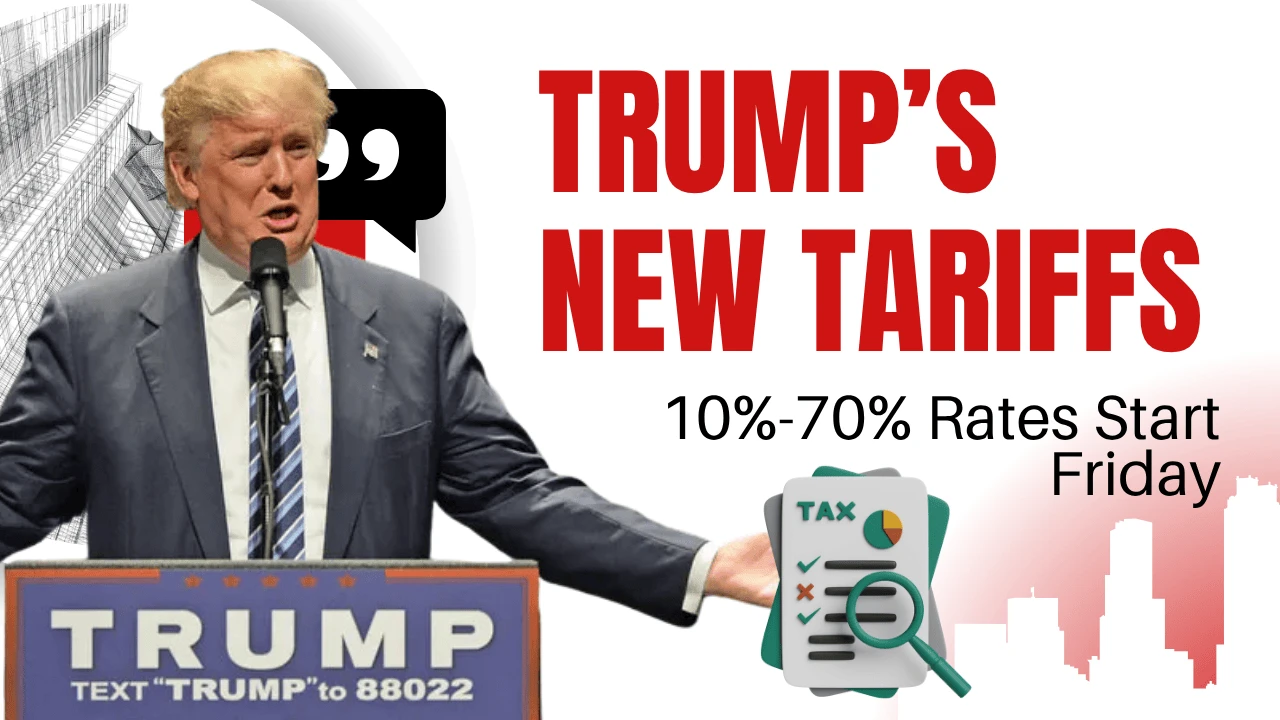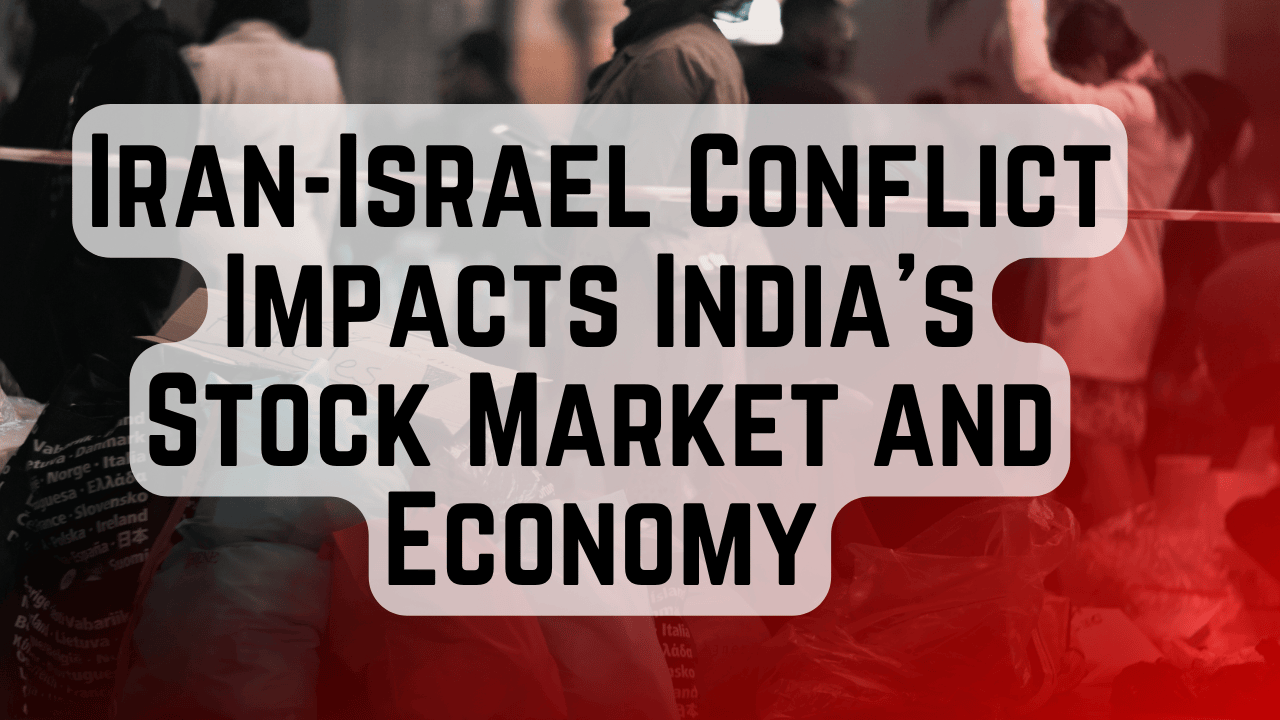Listen to This Article
Former President Donald Trump has once again placed tariffs at the center of his economic and trade agenda. In a move that has already rattled global markets and reignited debates over trade wars, Trump is expected to begin notifying U.S. trade partners of new tariff rates this Friday. Reports suggest the proposed tariffs could range from 10% to as high as 70%, depending on the country and product category.
This blog explores what Trump’s latest tariff plans mean for businesses, consumers, global supply chains, and the geopolitical landscape.
The Announcement: What We Know So Far
When Will Trump Reveal the New Tariffs?
According to multiple sources familiar with Trump’s plans, the former president will start telling nations their new tariff rates this Friday, making it the first major policy signal of his renewed push to reshape America’s trade relationships.
The announcements will reportedly occur through both public statements and direct communications with foreign governments.
Why the Wide Tariff Range of 10%–70%?
The proposed tariff range of 10% to 70% signals a strategy aimed at:
✅ Penalize countries with large trade surpluses against the U.S.
✅ Protect American industries Trump deems critical to national security.
✅ Discourage offshoring and incentivize U.S.-based production.
Insiders suggest that countries like China and Mexico may face the highest rates, while close allies could receive lower rates—or exemptions—depending on ongoing negotiations.
The Motivation: Trump’s “America First” Trade Doctrine
Revisiting Trump’s Tariff Legacy
Trump’s first term saw sweeping tariffs on steel, aluminum, and hundreds of billions worth of Chinese imports, sparking a U.S.-China trade war that led to supply chain shifts and price increases in many sectors.
These tariffs were framed as essential tools to:
-
Reduce the trade deficit,
-
Bring jobs back to the U.S., and
-
Pressure trading partners into fairer agreements.
Why Double Down Now?
Analysts say Trump sees tariffs as politically effective. His campaign team has reportedly told donors and advisors that an aggressive tariff policy could energize voters concerned about globalization, lost manufacturing jobs, and China’s economic rise.
Moreover, recent polling shows a bipartisan appetite for stronger measures against unfair trade practices—Trump aims to capitalize on this sentiment.
 Unlock Your Savings Today!
Unlock Your Savings Today!
Get the best deals with unbeatable service and exclusive offers.

Potential Impacts on the Global Economy
Disrupting Global Supply Chains
New, higher tariffs could create immediate disruptions in global supply chains, particularly for electronics, auto parts, consumer goods, and raw materials.
Companies relying on imported components may face:
-
Higher costs,
-
Reduced margins,
-
Or the need to find alternative suppliers outside tariffed countries.
Inflation Risks for Consumers
Tariffs are effectively taxes on imports—costs that businesses often pass on to consumers. Experts warn that if new tariffs in the 10%–70% range are implemented broadly, they could:
-
Push up prices on everyday items from smartphones to clothing.
-
Exacerbate inflation, which remains a concern for U.S. households.
-
Reduce purchasing power, especially for lower-income families.
Retaliatory Measures by Other Nations
Major trading partners affected by high tariffs—especially China and the European Union—may retaliate with their own tariffs, targeting U.S. exports such as:
-
Agricultural products (soybeans, corn, pork),
-
Automobiles,
-
Aircraft and machinery.
Such a scenario could trigger new trade wars, creating volatility in global markets.
Industries Most at Risk from the Tariff Hikes
Automotive Sector
Car manufacturers relying on imported parts will likely see significant cost increases. Higher tariffs on steel and aluminum could also drive up prices for U.S.-built vehicles.
Consumer Electronics
Products like laptops, smartphones, and tablets often depend on components manufactured abroad. Companies like Apple, Dell, and HP could face higher production costs, which may be passed on to consumers.
Agriculture
If retaliatory tariffs target American farmers again—as they did during Trump’s previous trade war—it could depress prices for crops and livestock, hurting rural communities.
Retail and Apparel
Many U.S. clothing brands source products from Asia. Tariffs above 20% could lead to higher prices or supply chain shifts, impacting both big retailers and small businesses.
Possible Exemptions or Special Deals
While Trump has hinted at broad tariffs, he has also suggested a willingness to negotiate exemptions for certain countries willing to strike new trade deals or make concessions.
This approach mirrors strategies from his first term, where nations like South Korea secured exemptions through bilateral negotiations.
Expect intensive lobbying by both U.S. companies and foreign governments in the coming weeks.
Global Reaction So Far
Markets Show Early Volatility
Initial news of Trump’s tariff plans has led to:
-
Stock market volatility, particularly affecting sectors vulnerable to trade fluctuations.
-
Currency fluctuations in emerging markets that rely heavily on U.S. trade.
-
Heightened demand for safe-haven assets such as gold and U.S Treasury bonds.
Foreign Leaders Express Concern
Officials from Europe, Japan, and Canada have already voiced concern, warning that sweeping tariffs could:
-
Violate World Trade Organization rules.
-
Damage decades-old alliances.
-
Undermine global economic stability.
Some countries have signaled they may challenge the tariffs in international courts.
 Grow Your Business with Proven Digital Marketing
Grow Your Business with Proven Digital Marketing
Ready to attract more customers and outshine your competition? Our tailored digital marketing strategies help you rank higher, generate qualified leads, and build a brand people trust. Let’s take your business to the next level.
Digital Marketing Solutions in Leading Cities

Will Tariffs Work? The Ongoing Debate
Arguments in Favor
Proponents of Trump’s plan argue that tough tariffs are necessary to:
✅ Level the playing field,
✅ Protect American industries,
✅ And strengthen national security.
They point to examples where tariffs forced trading partners to negotiate, like the USMCA deal with Canada and Mexico, which replaced NAFTA.
Critics Warn of Economic Damage
Economists skeptical of tariffs say the approach:
❌ Risks higher costs for American consumers,
❌ Disrupts international cooperation,
❌ And could ultimately slow U.S. economic growth.
They argue that targeted diplomacy and coordinated international pressure would be more effective.
What Should Businesses Do Now?
1️⃣ Assess Supply Chains: Identify suppliers and partners in countries at risk of higher tariffs.
2️⃣ Model Tariff Scenarios: Analyze potential cost increases and plan pricing strategies.
3️⃣ Consider Reshoring or Diversification: Explore moving production closer to home or spreading sourcing across multiple countries.
4️⃣ Stay Informed: Monitor official announcements and updates on U.S. trade policy.
✅ Advantages of the Proposed Tariffs
-
Protection for Domestic Industries
Tariffs can shield key U.S. industries (like steel, automotive, and manufacturing) from cheaper foreign competition, helping American companies stay afloat and preserve jobs. -
Incentives for Reshoring
By making imports more expensive, tariffs encourage companies to move production back to the U.S. or source domestically, potentially boosting local economies. -
Trade Negotiation Leverage
High tariffs can pressure trade partners into renegotiating existing agreements, opening doors for better deals more favorable to American interests. -
Reducing Trade Deficits
By discouraging imports, tariffs can help lower America’s trade deficits, a key priority in Trump’s economic agenda. -
National Security Benefits
Limiting dependence on foreign suppliers—especially for sensitive goods like electronics or military equipment—can strengthen U.S. national security.
❌ Disadvantages of the Proposed Tariffs
-
Higher Costs for Consumers
Tariffs often lead to price increases on imported goods, meaning American consumers could face higher costs on products ranging from electronics to clothing. -
Risk of Retaliation
Countries affected by tariffs may impose their own duties on American exports, hurting U.S. farmers, manufacturers, and other exporters. -
Supply Chain Disruptions
Modern supply chains are global; tariffs could force costly and time-consuming adjustments for businesses dependent on imported components. -
Inflationary Pressure
Increased prices on imported goods can add to inflationary pressures, reducing purchasing power and potentially hurting the overall economy. -
Strained International Relations
Aggressive tariff measures can strain ties with important allies, making collaboration on broader matters like security, climate change, or regional stability more challenging.Conclusion: A Defining Moment for Global Trade
Trump’s decision to begin notifying countries of new tariffs ranging from 10% to 70% marks a pivotal moment in U.S. trade policy. Whether these measures deliver on promises of stronger domestic industry or spark new trade conflicts remains to be seen.
One thing is clear: businesses, consumers, and governments worldwide must prepare for a new era of trade uncertainty.

 Disclaimer
Disclaimer
The views expressed by experts in this article are their own and do not necessarily reflect the opinions of any website, organization, institution, or affiliated entity. If you have any concerns regarding this article, please contact us at contact@quantamminds.com and also on WhatsApp
Frequently Asked Questions
When will the new tariffs start taking effect?
Official implementation dates are unclear, but notifications will begin Friday. Tariffs could take effect within weeks or months, depending on negotiations.
Which countries are expected to face the highest tariffs?
Analysts expect countries with large trade surpluses, like China and Mexico, to face the steepest rates.
How will these tariffs affect American consumers?
Tariffs increase import costs, which are often passed on to consumers as higher prices on goods.
Could these tariffs be challenged legally?
Yes. Countries affected could challenge the tariffs at the World Trade Organization or through other international trade agreements.
Are there any exemptions planned?
Trump has signaled openness to exemptions for countries willing to negotiate new trade deals or concessions.








 Pallavi Singh on 2025-07-04
Pallavi Singh on 2025-07-04

 Ashwani Kumar
Ashwani Kumar 



